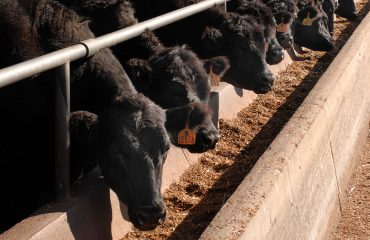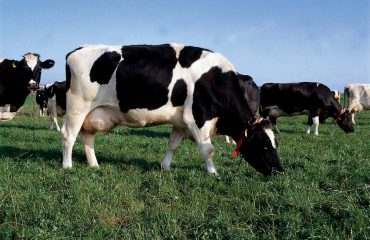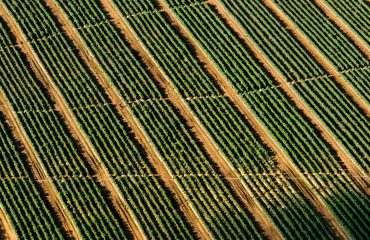As climate-tech startups work to create innovative solutions in a world increasingly impacted b...
Parametric insurance for crops

Parametric insurance for crops is a specific application of insurance designed to protect farmers against specific risks and uncertainties related to agricultural production. It is commonly used to mitigate the financial impacts of adverse weather conditions, for instance droughts, excessive rainfall, or temperature extremes, which have the potential to significantly affect crop yields.
In parametric crop insurance, the payout is triggered based on predefined parameters directly related to crop performance or weather conditions. For example, the trigger could be a certain level of rainfall within a specific period or a temperature threshold during the growing season. These parameters are chosen based on their correlation with crop yield or damage.
When the predefined trigger is met, the policyholder receives a predetermined payout based on the severity of the trigger event. The payout amount is typically determined before the policy is issued and is based on factors such as the insured crop, expected yield, and coverage level selected by the farmer.
Parametric crop insurance offers several advantages over traditional crop insurance. It provides a faster claims process since the payout is based on objective parameters, eliminating the need for time-consuming crop inspections or yield assessments. This allows farmers to receive compensation more quickly, enabling them to recover from losses and make necessary adjustments for the next planting season.
Parametric crop insurance also offers greater transparency and simplicity compared to traditional insurance, as the payout calculation is based on predetermined formulas or indexes. This can make it easier for farmers to understand and plan against potential risks.
However, it is important to note that parametric crop insurance has its limitations. The payout may not perfectly match the actual losses incurred by the farmer, as it is based on predefined parameters rather than individual assessments. Additionally, it may not cover all risks faced by farmers, such as pests, diseases, or market fluctuations. Therefore, parametric crop insurance is often used in combination with traditional crop insurance policies to provide more comprehensive coverage.
Overall, parametric insurance for crops offers a valuable risk management tool for farmers, helping them to protect their livelihoods and manage the uncertainties associated with agricultural production.
Traditional insurance policies may not always be well-suited for insuring crops due to several reasons:
Complexity of Loss Assessment: Assessing crop losses accurately can be challenging and time-consuming. Traditional insurance often requires detailed inspections and assessments of the damage incurred, which can be impractical and costly for large-scale agricultural operations. It may also lead to delays in claim processing, leaving farmers without timely compensation.
Price Fluctuations: Traditional insurance policies typically focus on indemnifying the insured against the actual market value of the crops at the time of loss. However, agricultural commodity prices can be volatile and subject to fluctuations. This can result in discrepancies between the insured value and the market value, potentially leaving farmers underinsured.
Basis Risk: Basis risk refers to the risk that the index or parameters used to trigger the insurance payout may not perfectly align with the actual losses suffered by the farmer. In crop insurance, this risk can arise due to variations in local conditions or farming practices that may differ from the standardized parameters used in traditional insurance policies. Basis risk can create uncertainty and limit the effectiveness of traditional insurance for crops.
Administrative Burden: Traditional insurance policies often involve complex paperwork, extensive documentation, and administrative processes. This can be burdensome for farmers, especially those with smaller operations or limited resources. The time and effort required to manage traditional insurance policies can detract from the primary focus of farming activities.
Parametric insurance for crops addresses some of these challenges by simplifying the claims process, reducing administrative burden, and providing quicker payouts based on objective parameters. It allows farmers to receive compensation based on predefined triggers without the need for extensive loss assessments. This makes parametric insurance more suitable and efficient for crop insurance in certain circumstances.
Parametric insurance is particularly well-suited for certain crops that are more susceptible to specific risks or have well-defined parameters that can be measured objectively. There are several risks and losses associated with crops that farmers and agricultural stakeholders face. These risks can arise from various factors, including weather conditions, pests and diseases, market fluctuations, financial risks and management challenges. Here are some examples of crops that are suitable for parametric insurance:
Weather-Dependent Crops: Parametric insurance is commonly used for weather-related risks such as drought, excessive rainfall, frost, or heatwaves. Crops like corn, wheat, soybeans, rice, and cotton are often insured using parametric policies based on factors like rainfall levels, temperature thresholds, or growing degree days.
Tropical Crops: Parametric insurance is useful for crops that grow in tropical regions and are vulnerable to extreme weather events such as hurricanes, typhoons, or cyclones. Examples include bananas, citrus fruits, coffee, cocoa, and palm oil.
Perishable Crops: Certain crops with short shelf lives or high perish ability can benefit from parametric insurance. For instance, parametric coverage can be designed based on temperature thresholds for fruits, vegetables, or flowers to protect against spoilage during transportation or storage.
Specialty Crops: Unique crops like grapes for winemaking or tobacco can be insured with parametric policies tailored to factors such as temperature, rainfall, or disease prevalence that directly impact their quality and market value.
Aquaculture: Parametric insurance can also be extended to aquaculture, covering risks related to fish farming, shrimp farming, or oyster cultivation. Parameters such as water temperature, salinity levels, or oxygen concentration can be monitored to trigger insurance payouts.
When it comes to high-value crops, there are several options that are commonly covered by parametric insurance policies. Here are some examples:
Wine Grapes: Wine grapes are considered high-value crops due to their use in winemaking. Parametric insurance can be designed to cover vineyards against weather-related risks such as frost, hail, excessive heat, or drought.
Citrus Fruits: Citrus fruits like oranges, lemons, and grapefruits are valuable crops in many regions. Parametric insurance for citrus crops can protect against events that could damage the fruit or trees. These events include hurricanes, freeze, and heavy rainfall.
Almonds: Almonds are a high-valued crop that requires specific growing conditions. Parametric insurance for almond orchards can be designed to provide coverage for risks such as frost, heatwaves, and water scarcity.
Apples: Apples are widely grown and can be susceptible to weather-related risks. Parametric insurance can protect apple orchards against adverse weather events like hailstorms, late frosts, or heavy rainfall during the harvest season.
Coffee: Coffee is a valuable commodity crop grown in many countries. Parametric insurance can help coffee farmers mitigate risks associated with extreme weather events, such as droughts, heavy rainfall, or temperature fluctuations.
Cocoa: Cocoa beans are the key ingredient in chocolate production. Parametric insurance for cocoa farms can provide coverage against risks such as hurricanes, excessive rainfall, or drought, which can affect cocoa’s health and productivity.
Berries: Various types of berries, including strawberries, blueberries, and raspberries, are considered high-valued crops. Parametric insurance can offer protection against risks like hailstorms, early or late frosts, or excessive heat, which can impact berry production.
It’s worth noting that the availability and applicability of parametric insurance for specific crops may vary depending on the region, insurance providers, and the level of technological infrastructure for data collection and monitoring. Farmers interested in obtaining parametric insurance for their crops should consult with local insurance companies or agricultural associations to explore the options available in their specific location
References:
Benami, E., Jin, Z., Carter, M. R., Ghosh, A., Hijmans, R. J., Hobbs, A., … & Lobell, D. B. (2021). Uniting remote sensing, crop modelling and economics for agricultural risk management. Nature Reviews Earth & Environment, 2(2), 140-159.
De Leeuw, J., Vrieling, A., Shee, A., Atzberger, C., Hadgu, K. M., Biradar, C. M., … & Turvey, C. (2014). The potential and uptake of remote sensing in insurance: A review. Remote Sensing, 6(11), 10888-10912.
Lin, X., & Kwon, W. J. (2020). Application of parametric insurance in principle‐compliant and innovative ways. Risk Management and Insurance Review, 23(2), 121-150.
Lin, X., & Kwon, W. J. (2020). Application of parametric insurance in principle‐compliant and innovative ways. Risk Management and Insurance Review, 23(2), 121-150.
Mahul, O., & Stutley, C. J. (2010). Government support to agricultural insurance: challenges and options for developing countries. World Bank Publications.
Margulescu, S., & Margulescu, E. (2013). Parametric insurance cover for natural catastrophe risks. Global Economic Observer, 1(2), 97.
Nitze, I., Schulthess, U., & Asche, H. (2012). Comparison of machine learning algorithms random forest, artificial neural network and support vector machine to maximum likelihood for supervised crop type classification. Proceedings of the 4th GEOBIA, Rio de Janeiro, Brazil, 79, 3540.
Prokopchuk, O., Prokopchuk, I., Mentel, G., & Bilan, Y. (2020). Parametric insurance as innovative development factor of the agricultural sector of economy. AGRIS on-line Papers in Economics and Informatics, 12(665-2022-413), 69-86.
Serra, T., Zilberman, D., & Gil, J. M. (2008). Differential uncertainties and risk attitudes between conventional and organic producers: the case of Spanish arable crop farmers. Agricultural Economics, 39(2), 219-229.











